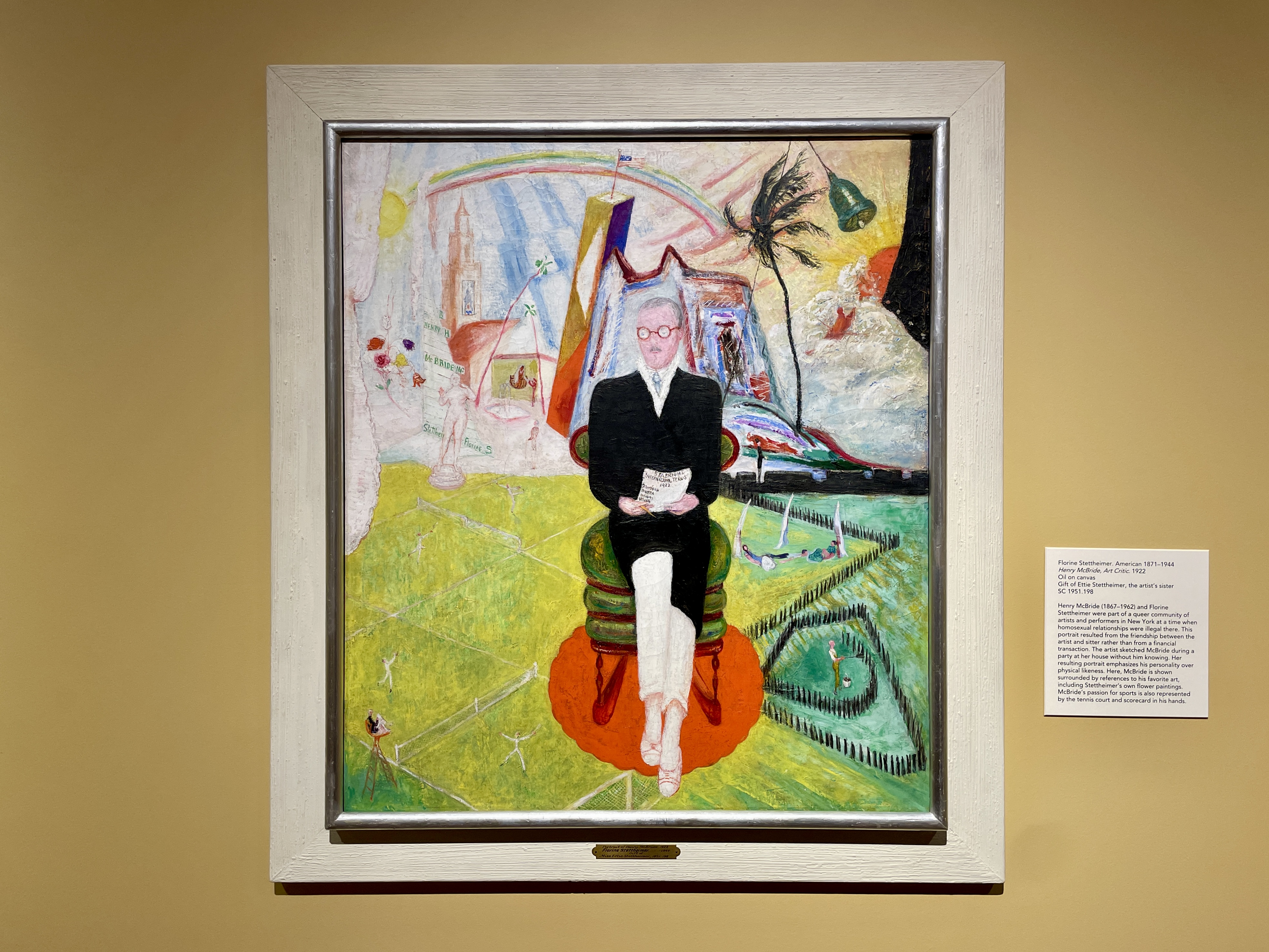
Outside the Box: Frames to Focus on During Your Next SCMA Visit
Kay Horak ‘24 is a self-designed Art Conservation Major with a Mathematical Sciences Minor and Museums Concentration. She is the 2023-2024 Kennedy Museum Research Fellow in Art History at SCMA, working with Danielle Carrabino, Curator of Painting and Sculpture. Here, she shares some of what she’s learned about frames in the museum’s collection through her fellowship.
While walking through any museum’s galleries, it can be easy to overlook the frames surrounding the artworks hanging on the walls. However, frames can constitute their own body of work and genre of art and make up an important part of a museum’s collection. Such is the case at SCMA, which boasts impressive holdings from the foremost framemakers dating back hundreds of years. This post will highlight just a few standout frames with incredible histories to keep an eye out for next time you’re pursuing the permanent collection.

Florine Stettheimer, Henry McBride, 1922
Currently on view on the second floor
Florine Stettheimer’s eccentric art is often complimented by equally eye-catching and unexpected frames. The frame around the portrait in SCMA’s collection is no exception. This painted white frame has been confirmed by multiple frame experts to be original to the piece and designed by Stettheimer herself. Many of the original frames designed and selected by Stettheimer were painted white, perhaps expanding the white background of her pieces. This particular frame has a reverse profile, which means the highest point in the frame is the area closest to the artwork, called the sight edge. The profile serves to push the painting forward towards audiences, emphasizing the bright and bold nature of the piece.
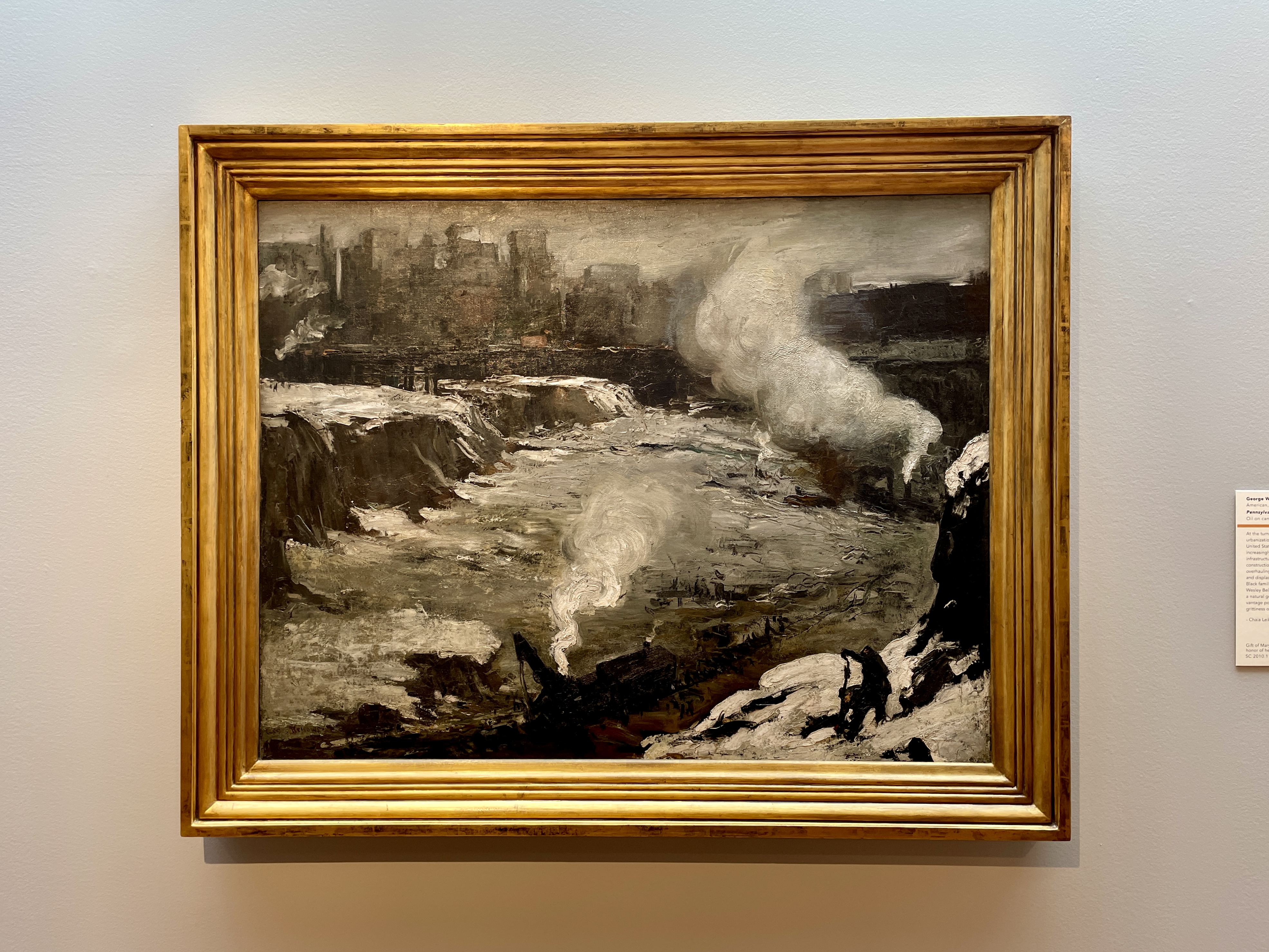
George Bellows, Pennsylvania Excavation, 1907
Currently on view on the third floor
George Bellows utilized a variety of frames during his prolific career and thus, extensive scholarship exists on Bellows’ specific frame choices (see article). The frame on this piece is a reproduction crafted in the style of many of the frames that adorned the artist’s works. In fact, the frame was created right here at SCMA in collaboration with Smith students! For several years, SCMA staff trained students in the art of frame restoration and construction. The frame on this piece was created in 2005 through this program. It mimics the style of New York framemaker M. Grieve Company, who framed numerous works by Bellows. The gilded frame features repeating parallel lines of varying width. Its profile curves downward toward the sight edge, the edge closest to the painting, helping draw the viewer into the piece and immerse them in the landscape.
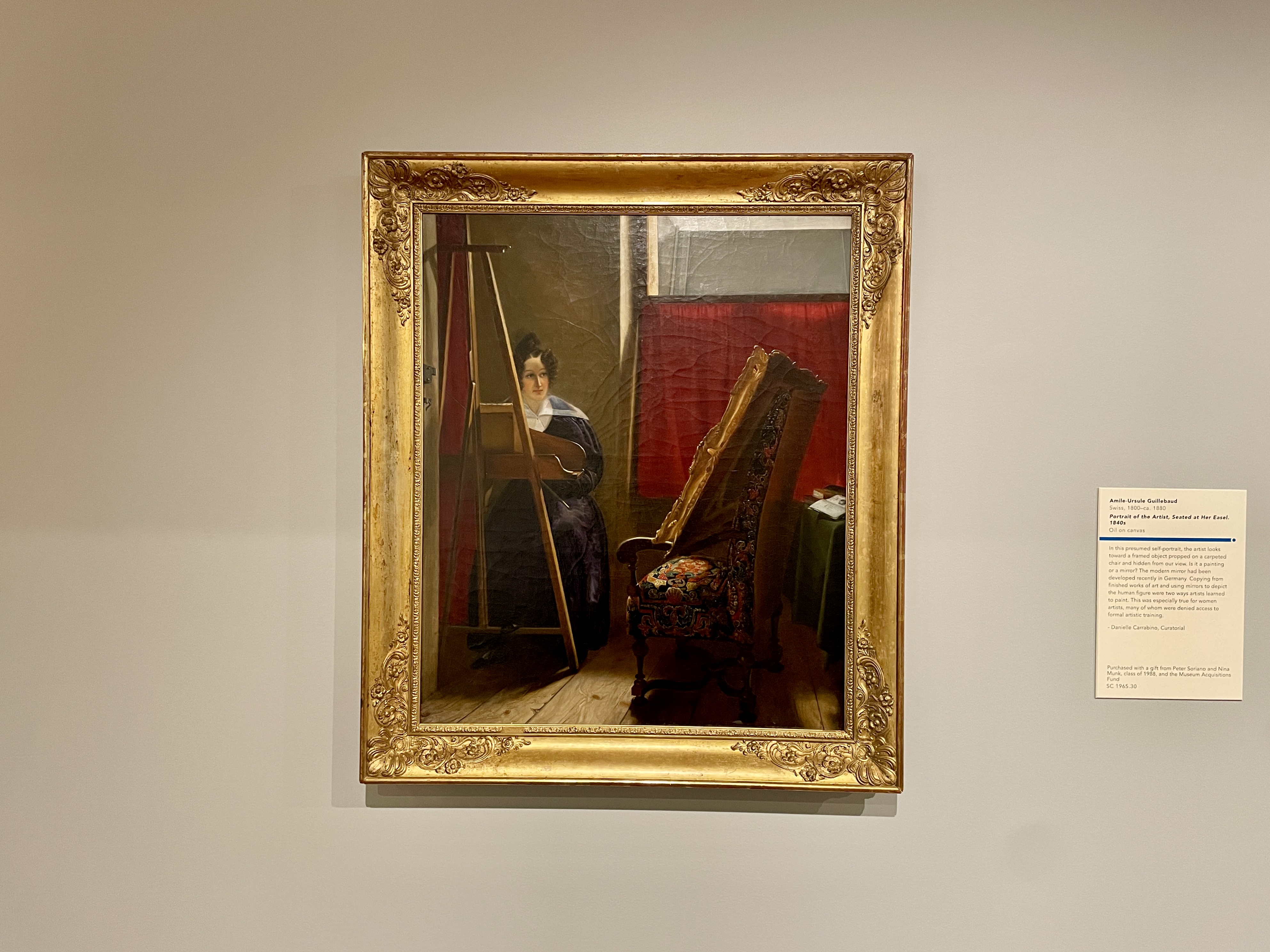
Amile-Ursule Guillebaud, Portrait of the Artist, 1840s
Currently on view on the third floor
Both the frame surrounding this painting and featured within it actually aided in fleshing out the history behind the work and its artist. Little is known about Amile-Ursule Guilledbaud beyond her nationality and birth and death dates. With mysterious artists and paintings like this, sometimes frames can aid in pinning down a more precise date or location of creation. In this case, identifying the frame portrayed in the piece as an 1840s Austrian frame helped narrow down the date made to a singular decade. The frame around the painting is also likely from the 1840s as well. Prior to this discovery, a much broader range of dates created had been considered. Findings such as this demonstrate the constructive and intertwined relationship between paintings and frames.
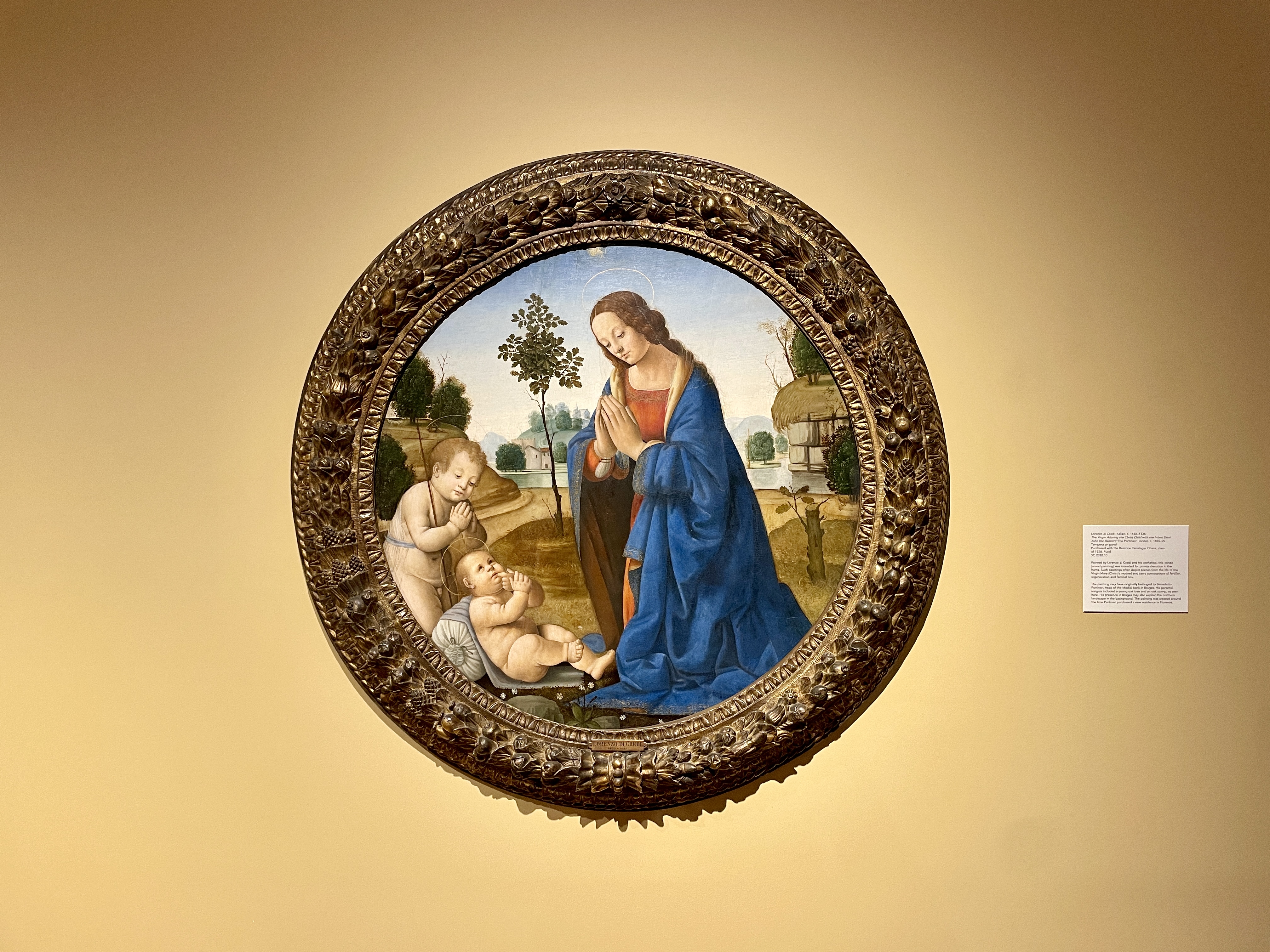
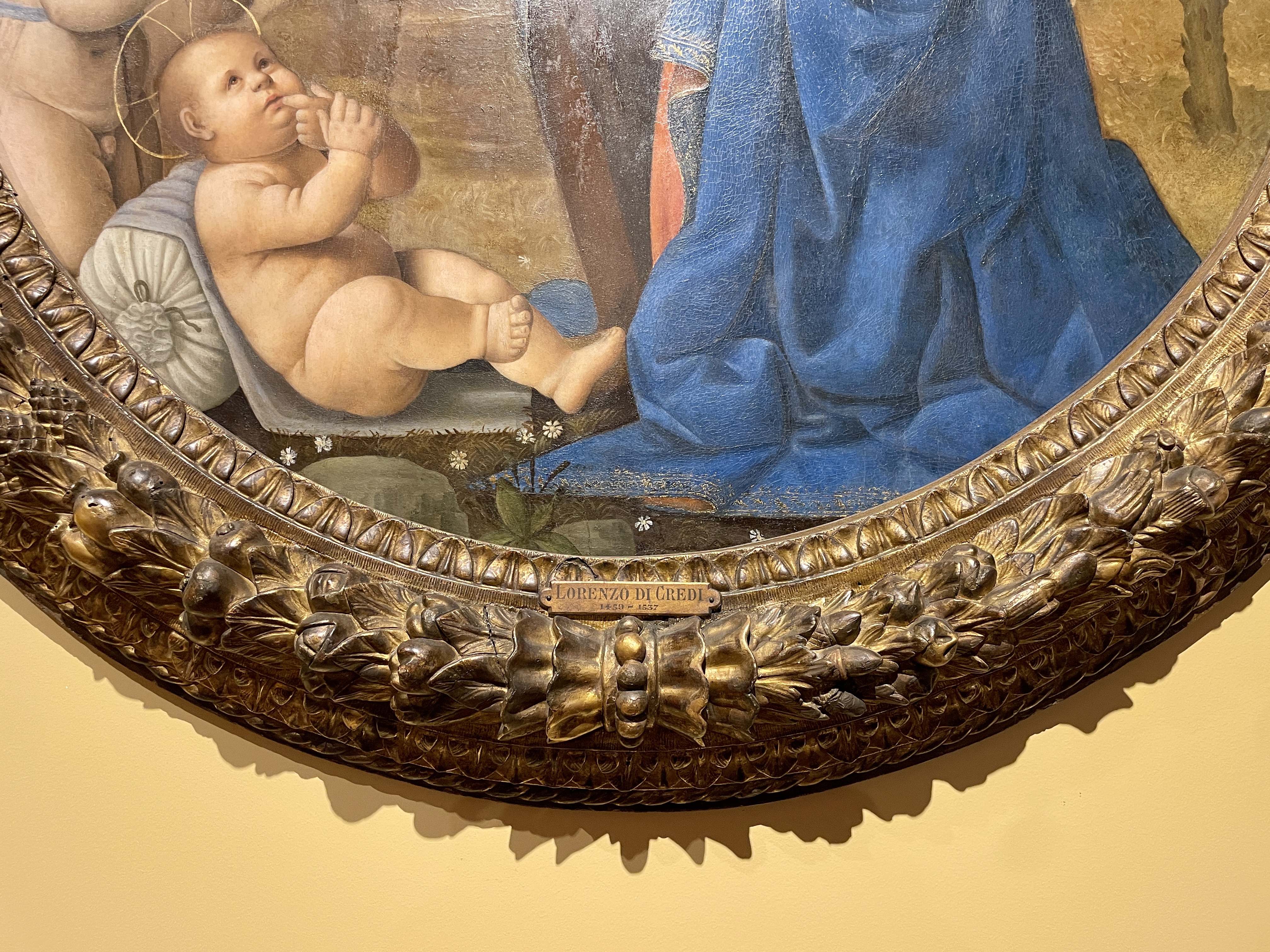
Lorenzo di Credi, The Virgin Adoring the Christ Child with the Infant Saint John the Baptist, circa 1485-90
Currently on view on the second floor
This frame is a wonderful example of a tondo frame that complements the work and its subject matter. Derived from rotondo, Italian for “round”, tondo is a term and category of art that blossomed during the Renaissance to describe a large, circular piece of artwork, often a painting. Thus, a tondo frame is round itself and created to adorn such a painting. The tondo frame is unique among frames since it is defined by its shape, rather than its carvings or profile.
Although this tondo frame is likely not original to the painting, it pairs well with the piece and includes details that directly relate to the work. The carved decorations of flora and crops, including acorns and pomegranates, reinforce themes of fertility and abundance. Such fruits were a common motif on these frames and thought to symbolize fruits found in the Garden of Eden, reflecting the ubiquity of religious subject matter in the genre.
Although this selection only scratches the surface of remarkable frames at SCMA, I hope this introduction will enhance your next museum visit and inspire you to look closely at these singular works of art.